Meet the Major League Executives Bringing Music to Sports
- Oops!Something went wrong.Please try again later.
- Oops!Something went wrong.Please try again later.
- Oops!Something went wrong.Please try again later.
- Oops!Something went wrong.Please try again later.
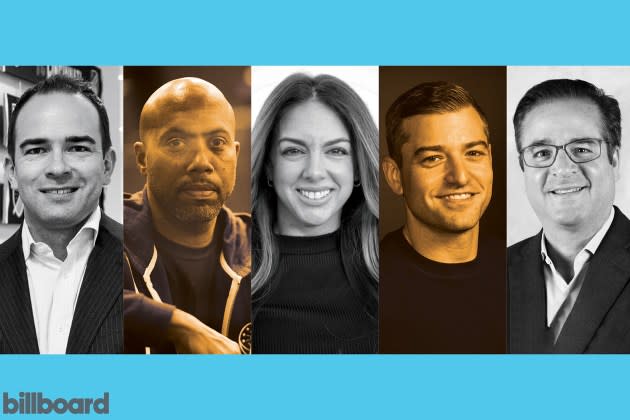
When Usher takes the stage for his halftime spectacular at Super Bowl LVIII, the game-day drama will momentarily pause as his set gets the full spotlight. But for those in the stadium and watching at home, music is hardly confined to that midgame interlude. Songs have become intertwined with every facet of the Super Bowl — just the highest-profile example of how major sports leagues continue to deepen relationships with the music industry, from the biggest championships to weekday regular-season games.
While all the major North American sports leagues operate differently, each has dedicated people leading the charge for music integration, be it booking artists for tentpole events, coordinating with record labels and rights holders for synch placements, supporting the initiatives of individual teams, liaising with broadcast partners and more. In the National Football League, it’s head of music Seth Dudowsky; the National Basketball Association has senior vp/head of live production and entertainment Carlton Myers; Stephanie Scarpulla is Major League Baseball and MLB Network’s senior director of global music partnerships and clearances; Steve Mayer is chief content officer and senior executive vp for the National Hockey League; and Major League Soccer has Camilo Durana, executive vp of the league’s Apple partnership, properties and events.
More from Billboard
Why This Company Wants To Recycle Instrument Strings Across the Globe
Inside Selva Negra, Maná's Ecological Foundation Benefitting Turtles, Trees & More
Beyond clear-cut use cases during games — such as MLB players hand-picking songs to play before they bat or NHL squads blaring team anthems after scoring a goal — these executives have worked to make sporting events themselves musical spectacles: take the hourlong Jonas Brothers concert that will precede a Feb. 17 NHL Stadium Series game at New Jersey’s MetLife Stadium, or the all-women lineup, including H.E.R. and Mickey Guyton, that MLB booked to sing the national anthem at the 2023 World Series.
Increasingly, leagues are collaborating with athletes to bring them off the field, court or ice and into the music world. MLB recently tapped Texas Rangers shortstop Corey Seager to present at the Country Music Association Awards. Meanwhile, the NFL partnered with Interscope and Electronic Arts Sports this past offseason, leading to players creating an EP that is included in the latest iteration of the Madden NFL video game franchise. Plus, both former and active MLB, NFL and NBA players double as Billboard-charting artists.
As sports leagues expand internationally more than ever, their music-focused executives are using tunes to get younger fans buying game tickets and watching broadcasts — while continuing to increase their appeal among longtime sports lovers. “To give exposure to not only artists who want to work, but the stories we want to tell, the values that we want to portray — that’s the opportunity all these leagues have,” Dudowsky says. “There are so few things left that really cut through the noise of culture. Sports is right at the top of that list.”
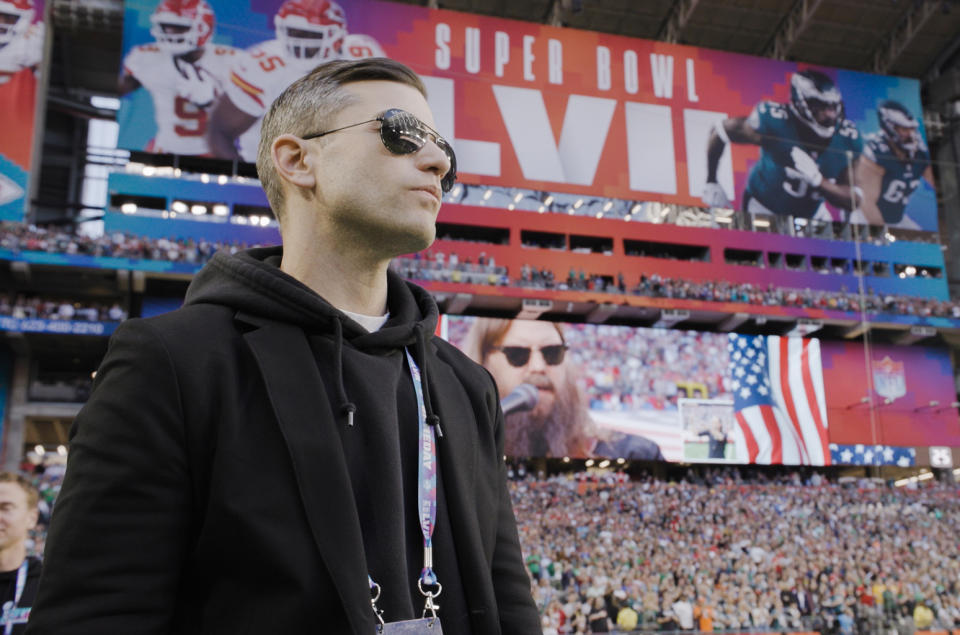
How has the use of music evolved on game days within your sport?
Stephanie Scarpulla, MLB: With walk-up music and the seventh-inning stretch, music is inherently built into the fabric of baseball, but we show up in a lot of other ways. Especially on the club level, because there are so many games played, it affords us the opportunity to try out new activations and help amplify what the clubs are doing. And likewise, bring them opportunities if an artist is a fan of a particular club: [New York Mets pitcher] Edwin Diaz adopted the [Blasterjaxx and Timmy Trumpet] song “Narco,” and after Timmy performed it during a game at Citi Field, the streams were way up. The Phillies adopted an anthem by Calum Scott [his cover of Robyn’s “Dancing on My Own”] — he’s a U.K. artist, but at the time of the Phillies in the [2022] World Series, Philly was one of his top markets.
Steve Mayer, NHL: The music for a team in Las Vegas is going to be different than the music in Florida, than the music in [North] Carolina, than the music in Nashville. That’s the beauty of it: We’re pitched by all walks of music. The country folks in Nashville know that the Predators have become a huge piece of that community, and it’s the same as a rapper in an urban community.
But Stephanie said something important: Where we’ve found the most success is the passionate [artist who is a] fan. They’re the ones that become all-in, and when you catch them early in their career and then they emerge, they remember where they got their start. Tate McRae was somebody who three years ago came to us and said, “I’m a hockey fan, could you ever use me?” We started using her. We worked with her at our All-Star Game [on Feb. 3 as a performer during intermission and as one of four celebrity team captains, along with Justin Bieber, Will Arnett and Michael Bublé]. Those are the relationships we try to build.
Seth Dudowsky, NFL: The NFL has less games [than other leagues], but we have so many amazing creatives. A lot of what I try to do is be a bridge from the music community and the production world of what is possible with artists — whether it’s live performance, custom covers, opportunities with new singles. Bridge the people that have good ideas that either don’t have the relationship or the knowledge of how it would work. I see so many producers that once you start getting into rights, terms, takedown dates, different interpolations, they go, “It’s just too complicated,” and that’s where I want to help them.
Carlton Myers, NBA: A lot of times the teams will take cues from the players — that’s what you’ll hear during warm-ups. Throughout the game, it varies by market, as Steve mentioned. A unique opportunity where we had to do this ourselves outside of what the teams do on a daily basis was during [the pandemic]: We had all of the teams in one location, and we were charged with recreating each one of those teams’ home game atmosphere, which is largely driven by music. We partnered with all of the teams during that time [and asked], “What are the tracks that you use during your warmups? What do you use during your intros? What kind of stuff do you go to in the third quarter when the game gets tight?” We recreated that for all 30 teams.
Camilo Durana, MLS: We view music as something that can be fan-led. We work closely with our [fans] and enable them to bring instruments into the stadiums. If you go to an MLS game, fans are singing and chanting for 90 minutes. The other thing is, we believe we can cut through with creativity that really means a lot to communities. There was a great collaboration between adidas and Nashville SC: They needed an away uniform, and what’s more Nashville than Johnny Cash? They worked with the Johnny Cash estate to design a Man in Black uniform, and we released it in concert with Apple Music, who had Bailey Zimmerman [and] Carin León [record] Johnny Cash covers.
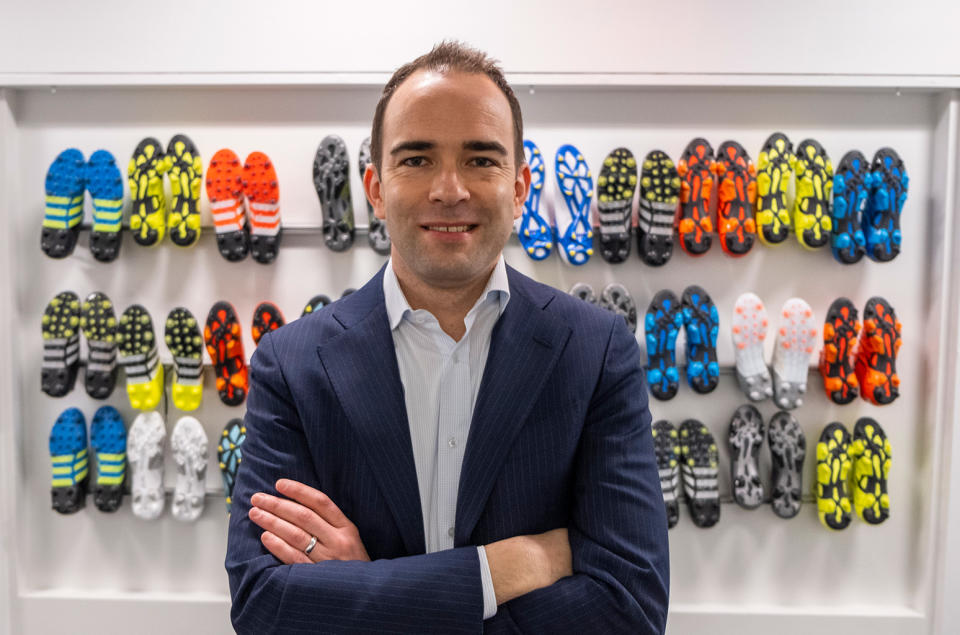
In what ways do you work with your league’s star athletes?
Myers: At the NBA, we have players and former players that are artists. [Milwaukee Bucks guard] Damian Lillard performed at All-Star Weekend in 2020 alongside Lil Wayne and Jeremih. Shaq is an international DJ and has performed. [Memphis Grizzlies guard] Victor Oladipo sang the anthem. We take cues from players on their musical interests and try to infuse that whenever we can. In Charlotte [for] All-Star Weekend [in 2019], we had J. Cole perform; that was a groundswell from our players. When he performed at halftime, all the players came out of the locker room.
Mayer: Those are the cool moments that we all remember. We’ve taken certain star players and found out their playlists. For us, and it’s actually a bit of a trend, there have been a few teams who have started to work with their players and play their song after a particular player scores. That’s taking a cue from baseball, where that walk-up music is part of the energy not only in the building, but for the players themselves. We also try to get our players to concerts. The more that they’re seen in those spaces, too, is a good look for us.
Durana: We also view music as a vehicle to better connect players with fans. We look at, for example, what the NBA did with fashion [including outfits worn by players arriving to games] to help players express themselves in ways that build their stardom. We think music can help do that: by allowing players to express themselves, post playlists on Apple Music — we sometimes highlight them on our broadcasts because we have centralized production.
Dudowsky: One challenge we have is that all of our players are wearing helmets. We talk a lot about how we give fans that access beyond the helmet, and music is a window into people’s personalities in a lot of ways. To Steve’s point, I’m a huge Dodgers fan, and I remember Corey Seager coming out to country music and Cody Bellinger coming out to hip-hop [when they played for the Dodgers], and those 15 seconds gave me some insight on who they are as people. That’s ultimately what fans want: to feel a connection with the players.
I also know that when we look at who I take my cues from of what’s relevant, what’s cooler than professional athletes in their 20s? They have their fingers on the pulse of what’s happening in culture. If it’s playing in locker rooms and they’re listening to it during their personal time, it’s probably going to resonate with our fans of a similar age group.
How do you approach tentpole events from a musical standpoint?
Dudowsky: We have the Super Bowl coming up, and when you talk about audiences of that size, it really does hit every corner of this country and the world. No one artist is going to appeal to everybody, but how do we use this platform to bring as many people together using music? Part of what my mission has been is to showcase that every genre has a place up on that stage. Every culture that’s part of the fabric of this country and the world deserves a place. That’s both the challenge and the opportunity.
Myers: We try to highlight different genres that are specific to where we are, what’s happening culturally [and] what applies directly to that event. We have a huge international audience, so last year at the All-Star Game with Afrobeats being the halftime theme, that was something where we stepped outside of what people would’ve thought was going to be on that stage in Utah.
Mayer: We look at the game itself as the centerpiece always, but you want to make an event the memory of a lifetime for a fan. The music and everything that comes with it — the pyro, the spectacle, the lighting — that’s a piece for us of making an event go from “That was great’’ to “That was incredible!” We’ve leaned in hard on making our production as good as it can be; we partnered with those producing major concert tours or awards shows.
When I first got to the NHL, it was hard to book anybody to do one of our events. Now I get phone calls from labels, agents [and] managers. We all have made music in sports so much bigger than it used to be, and we have become a big opportunity that a lot of artists want to put on their résumé. That’s something that I’ve seen change pretty dramatically in my years [here].
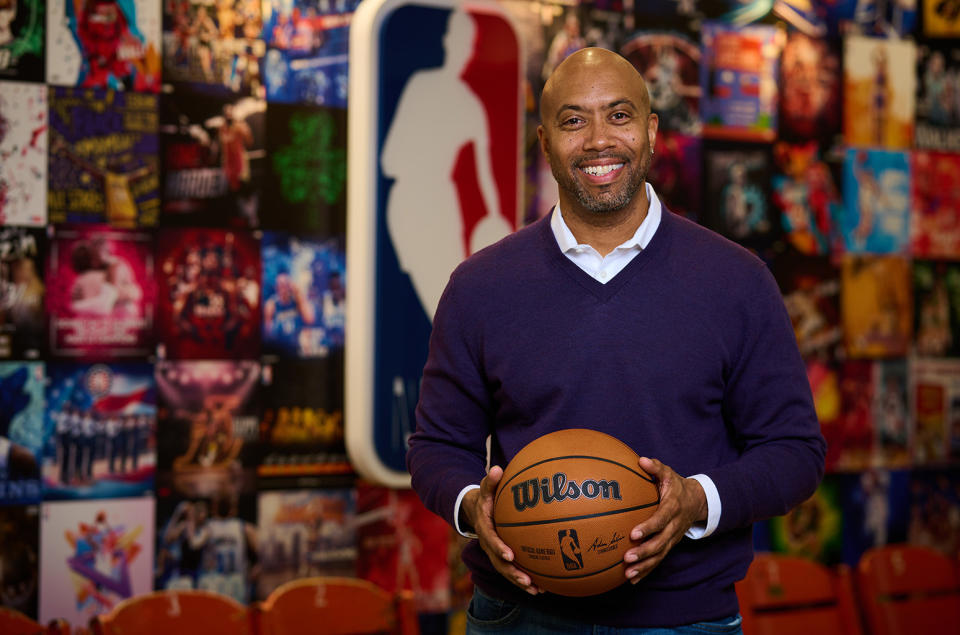
When it comes to live performances, how do you weigh booking a buzzy artist versus an established act that might feel less of-the-moment?
Dudowsky: It [depends] on what you’re trying to achieve. What I’ve seen so many times, especially early on in my time here, is that an artist will break, get big and then, whether it’s brands or leagues, they want to book that artist. And [by then], that time has passed: They already have their year set, they’re already too hot. Then you have to wait for them to cool down and get them on the other side or wait for the next cycle. Whereas when you’re actively talking to the labels and managers and understanding what is about to come, you can be a part of that rise and go through that journey with them.
Scarpulla: A lot goes into figuring out if that artist makes sense, whether that’s looking at their engagement rates and social sentiment or their social audiences to make sure that we’re engaging with the right artist for the right event. To Seth’s point, a lot goes into researching to make sure that you time a campaign the right way, whether it’s an on-field performance, a synch or any kind of music partnership.
Durana: We start with the personality and making sure that it’s somebody who’s driving culture but also representative of the diverse and young, progressive league that we are. Of course, we look at performances, but if we have the right fit, then we can look at things like putting them in our spots or having them [voice-over] a lot of the promo that we have as well. We look at much broader relationships for our big events.
Myers: We’ve had the opportunity to catch artists on the rise: Beyoncé in 2004, Rihanna in 2011, Nicki Minaj in 2012. We’ve also worked with people like Sting and Elton John who have extensive catalogs. Outside of just performances, a lot of musical artists work with us in our celebrity game across All-Star Weekend, so we’ve had people from Bieber to Bad Bunny that we’ve gotten during their rise. We try to get them back when they get that big, but sometimes it doesn’t work out.
Dudowsky: To that point, what’s awesome about the current generation is that there’s this nostalgia. Older artists are having those similar kinds of moments for a younger generation. They might be well known, they might have a catalog, but to [young audiences] it’s like a brand-new, breaking artist. I can’t believe the amount of requests I’ve gotten for Creed to come back to the NFL.
Mayer: We’re in the same boat! If I booked Creed, my whole office would go nuts. They’re on fire right now.
Scarpulla: That speaks to the idea that you want to use music in a way that brings forth a new fan base, but also appeals to your existing fan base: making sure that you’re highlighting when Creed goes viral, but also working with emerging artists and following their career trajectory.
Tell me about the process of licensing music for your games and broadcasts.
Dudowsky: From the NFL side, it’s more simplified because we’re not dealing with as many local broadcasts. The national broadcasts handle their own synch integrations in game. NFL Media — NFL Network, our social platforms, all of that — is under our control. In terms of how [NFL Media is] selecting the music or clearing it, one of the most important things that I’ve found, at least in terms of our content and the way we’re using synchs, is reusing things on social — and the hornet’s nest that has become, especially with archive rights or capturing things in-stadium that you want to be able to post. As we expand across different platforms, I tell our executives that one of the things that will sink our content quicker than anything is not having the right music rights. We spend a lot of time looking at how we can simplify things but also make sure that we have the flexibility to be where our fans are, across all platforms.
Durana: For us, it’s even more singular because we centralize our production. We’re producing every single game. We stream on MLS Season Pass on Apple TV, so we have the benefit of having Apple Music collaborating with us on music selection and the entire process from start to finish — which has been a real benefit to that new partnership this year.
Scarpulla: We talk with our rights holders and bring them up to speed on certain partnerships that we’re looking toward, certain brand campaigns that we’re working on, to make sure that we’re approaching it from 360 degrees of covering our broadcast partners and their rights to utilize synchs or showcase any on-field performances or in-ballpark activations. It’s really important because when an artist looks to us to partner, they’re wanting that full coverage. They’re not just wanting to do an on-field performance. They’re looking for social promotion, they’re looking for a broadcast component. It’s in our best interest to make sure that we’re approaching a partnership with the idea that we’re covering a very broad set of rights so that we don’t have to go back and add things after the fact.
Myers: Some of our national broadcast partners and a number of the local partners have relationships or deals with record companies where they’ll have, say, eight to 10 songs per month that they’ve cleared for use across all their outlets. Oftentimes, if one of our tentpole events falls within that time period, we’ll lean into using those tracks. This year, we partnered with LL Cool J and The Roots to do [a reimagining of “Mama Said Knock You Out” for] the in-season tournament anthem. That was then part of every single in-season tournament broadcast — both local and national — and went out on our international channels as well. We had to work really diligently with our licensing counterparts to make sure that we were covered there.
Scarpulla: A lot of our music partnerships can start from a simple synch placement. It could be something small, and then we keep coming back to it, and next thing you know, we’re talking about working with that artist to be an ambassador for either a series or for the year.
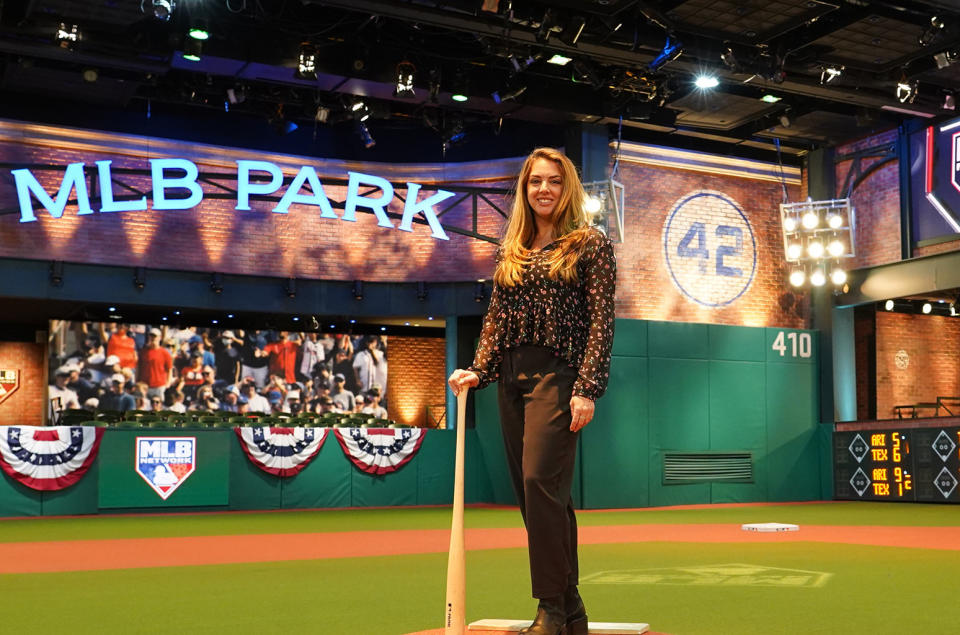
Professional sports leagues are becoming increasingly international. How does that impact your goals?
Scarpulla: This year, it’s a big focus for us as we head into the MLB World Tour. For the first time, we’re going to be [playing games] in Seoul, [South] Korea; we’ll be in the Dominican Republic; in Mexico City; as well as London. [It’s about] making sure to not only provide awareness for those events taking place there, but that we’re culturally representing where we are. Being in Seoul, it would be a natural fit to align with a K-pop artist. That’s going to play an integral role in how we choose the artists that we work with.
Durana: We’re part of a global soccer ecosystem — our players participate in the FIFA World Cup, the largest sporting event on the planet. We’re in a position where we’re streaming our games in over 100 countries with a single subscription. We have enormous visibility, so we’re very thoughtful about music selection. The great thing for us is the rise of Latin music because of the composition of our league. [We have] players from over 80 countries, and a very strong composition from Latin America. It’s at the center of how we’re thinking about international.
Dudowsky: International is among our highest priorities. We’ve been playing games overseas for a number of years, expanding in Germany and we’ve announced our first game in Brazil next year. Music has been an amazing opportunity to get fans there not only excited but [to make them] feel like they have something to touch a game that might otherwise be foreign to them. We know that there’s the perception that it’s an American sport, and while that might be true, how do we translate it and make that feel authentic to the country that we’re going to and ultimately the fans that we’re trying to attract there?
Myers: The majority of our fans are located outside the U.S., and 25% of our players are foreign-born. We’ve been playing games overseas for over 20 years now. What we find as we go from country to country is a lot of the fans want an authentic NBA experience, but you get a great response when you can infuse the local music into that. We try to couple both together and punctuate certain points in the game with international flavor while also giving them the NBA experience.
Mayer: We treat a game [internationally] as if it would be a signature tentpole event over here. But it is interesting, and I’m happy you mentioned it, Carlton. The fans over there, they really do love to experience what it’s like to be here without being here. So we bring over a lot of the things that we do musically and what we’ll do from game presentation points of view and recreate it over there.
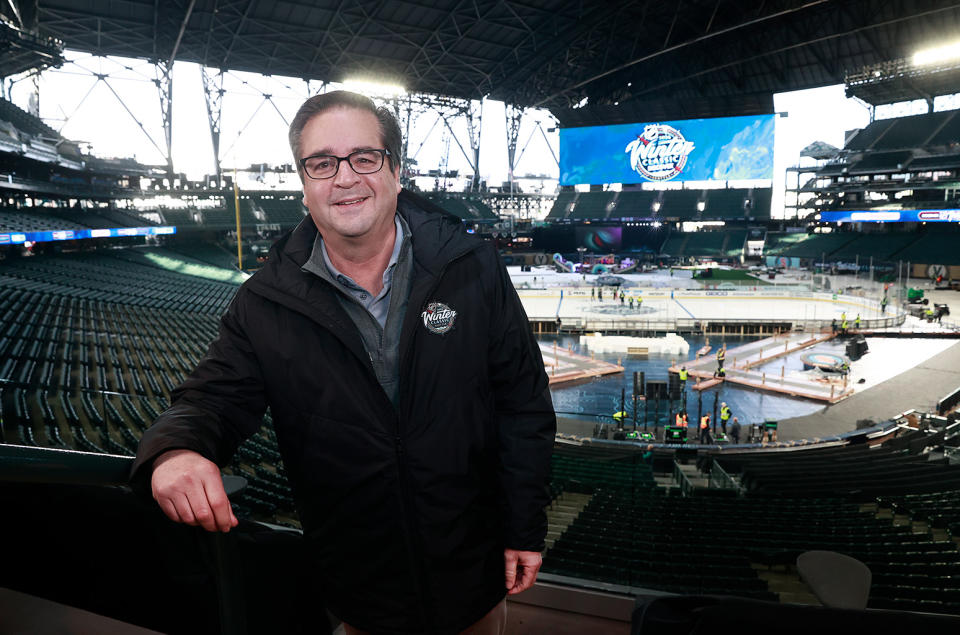
How much are you learning from one another’s initiatives or competing against one another?
Scarpulla: We have an interesting model because MLB Network produces NHL Network, so we have a lot of visibility into what Steve and his team are doing on the NHL front. But I would never look at it as competition so much as inspiration. We have a lot of weekly meetings where we do case studies on what everybody on this call is working on — what works and what doesn’t and what we can learn.
Mayer: The record labels have sports departments now that are focused on working with us to keep us informed. Carlton and I are playing the same season, so of course there’s crossover, but there are a lot of artists to go around. We all have our artists, and you go back to the well — many times, it’s where you find out about someone else. We probably have all worked with a particular artist at some point in time, but we don’t get in the way. If anything, I think we complement each other.
Dudowsky: If you looked at a Venn diagram in the music community of whom we work with, it would be a circle. And when one of us does well, then sports performances become more appealing for artists. I’ve never really had competition other than scheduling dates, which is not unique to sports. If anything, we probably could do more of sharing information and talking about how other artists and other events are run. It has only been a rising tide that has lifted all of our ships as the leagues and the teams have continued to develop what we’re doing.
Scarpulla: There’s an interesting thing that’s happening in the music industry where we’re finding more labels, publishers [and] artists’ management coming to us and saying, “I need a sports look. My artist wants a sports opportunity.” The more that we’re all collaborating, that just drives artists seeing the benefit of their music being used on our platforms.
Durana: If you take a big step back and you think about consumption in general and the changing habits of consumers, at the end of the day, music makes the sports experience better. If we can see successes across all the other leagues, it’s just going to make us stronger and continue to build the opportunities. As Stephanie was saying, people are coming to us, so there’s an element of competition — wanting to stand out because you are in some instances competing for share of mind, share of wallet. But in this particular space, the successes of the leagues actually benefit us all.
A version of this story originally appeared in the Feb. 10, 2024, issue of Billboard.
Best of Billboard
Four Decades of 'Madonna': A Look Back at the Queen of Pop's Debut Album on the Charts
Chart Rewind: In 1990, Madonna Was in 'Vogue' Atop the Hot 100

